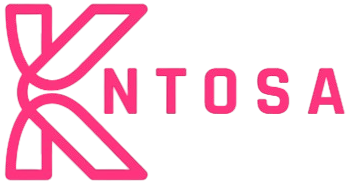BLOG
Refund 762.50 to 305.00: What You Need to Know

When it comes to refunds, the process often feels like unraveling a puzzle. Add in varying amounts—like the $762.50 to $305.00 refund range—and the complexity grows. But fear not! Whether you’re a customer wondering how to navigate the system or a business seeking clarity on refund policies, we’ve got you covered.
This guide dives into everything you need to know about refunds between $762.50 and $305.00. From understanding refund eligibility to exploring the steps to issue or receive payment, we’ll untangle any confusion. By the end, you’ll be equipped with actionable insights for a smooth refund experience.
What Is a Refund 762.50 to 305.00, and Why Do Amounts Vary?
At its core, a Refund 762.50 to 305.00 is the return of money to a buyer after a purchase, often initiated due to dissatisfaction, defects, or a change of plans. But why does the refund amount sometimes seem inconsistent?
Refund variations often depend on the conditions tied to the purchase. Partial refunds, deductions for restocking fees, or pro-rated calculations can all influence the amount a customer eventually gets back. If, for example, someone refunds only a portion of a purchase (like returning one item from a bundle), they might receive $305.00 instead of $762.50, the total purchase cost.
Refund amounts are shaped by policies. That’s why understanding what goes behind the numbers is crucial for meaningful resolutions.
How Do You Know You’re Eligible for a Refund?
Eligibility depends on the refund policy of the retailer, service provider, or digital platform where your purchase occurred. Some common eligibility determinants include:
- Return Deadlines
Companies often set specific time frames for returns or refunds. For physical goods, this period may be 14, 30, or even 90 days. Refunds for services often align with usage timelines.
- Condition of the Product
Physical products typically need to be returned in their original, unused, and undamaged condition to qualify for a full refund. If used, the refund may reflect deductions.
- Proof of Purchase
Most businesses require proof of the transaction for validation. Your receipt or order confirmation is your golden ticket.
- Special Exceptions or Clauses
Some policies allow returns for specific conditions, such as defects, damaged goods, or incorrect orders, even when deadlines have passed. Always check if the product or service you used has exceptions, especially for high-ticket purchases like those within this range.
Steps to Get Your Refund
Here’s a step-by-step guide to ensure that the refund process is as smooth as possible. Whether you’re working within the $762.50 upper limit or the smaller $305 range, the process largely remains consistent.
1. Read the Refund Policy First
Refund policies act as roadmaps for recovering your money. Find out how refunds are handled for your specific case. Familiarize yourself with details like time limits, acceptable reasons, and the documentation required.
Example Scenario:
If you purchased an event ticket costing $762.50 but only attended half the days, the organizer might prorate your refund amount to $305.
2. Contact the Seller or Service Provider
Reach out to customer service teams to initiate the refund. Use email, online chat, or phone services to ensure you have documentation of your request.
Pro Tip:
Be polite and concise. Explain the issue clearly, provide receipts, and highlight how you meet the refund criteria.
3. Prepare for Deductions
If the business maintains restocking fees or applies deductions (e.g., shipping costs or partial service use), remember these amounts will affect what you receive.
Example Scenario:
Returning an expensive gadget worth $762.50 but without original packaging could result in a $57.50 restocking fee, leaving you with $705.
4. Follow Up Regularly
Refund processes are prone to delays, especially for transactions governed by policies that need reviews. Politely follow up after the indicated wait period.
Insider Tip:
Document every communication. Keep track of reference numbers, email threads, and dates to ensure clarity if disputes arise.
Issuing Refunds as a Business
For businesses, refunds go beyond simply giving money back; it’s about preserving trust with your customers. Here are best practices for handling refunds from the other side of the table.
1. Proactively Display Transparent Policies
Ensure your refund, return, and exchange policies are clear and readily available. Transparency prevents misunderstandings or unmet expectations, which often lead to dissatisfaction.
2. Streamline Internal Processes
Make it easy for your team to process transactions of various sizes, including amounts like this ($305–$762.50). Leverage digital tools or automation to simplify refunds and ensure timely resolutions.
3. Communicate With Compassion
Refund requests can frustrate customers. Even if the policy doesn’t allow a full refund, offer a polite explanation and alternatives, such as credit or exchange options.
4. Address Complaints Promptly
Negative reviews stemming from refund disputes can damage your reputation. Deal with grievances immediately by listening actively, apologizing if necessary, and offering solutions within policy boundaries.
Common Refund Challenges and How to Overcome Them
Even with perfect policies and prepared consumers, challenges often surface when refunds are involved. Here’s how to cope with some common bottlenecks.
1. Delayed Refunds
Sometimes banks or financial services take longer than anticipated. Businesses can mitigate this by offering accelerated solutions like store credits while customers await refunds.
2. Unawareness of Pro-Rate Policies
Many don’t realize refund amounts can be adjusted based on usage periods. Avoid miscommunications by clarifying terms in advance.
Example:
If you cancel an annual subscription priced at $762.50 halfway through the year, you’d likely receive a refund closer to $381.
3. Documentation Shortfalls
A lack of essential documents—like receipts, card statements, or product IDs—can derail the process. Always keep digital records for easy reference.
How Refund Systems Foster Trust
Refund policies play an outsized role in customer satisfaction. For consumers, they provide safety nets for purchases. For businesses, they offer opportunities to repair relationships.
The power of fair refund systems rests in the balance they create—a blend of accountability, goodwill, and confidence in the buyer-seller dynamic. For purchases involving amounts ranging between $762.50 and $305.00, these principles become indispensable.
Final Thoughts – Navigate Refunds With Confidence
Whether you’re requesting or issuing refunds, understanding policies and processes is essential to smoother outcomes. Keep an open line of communication, maintain realistic expectations, and document every step diligently.
If you’re a consumer, never hesitate to ask questions or seek clarity when you’re entitled to your funds back. And if you’re a business, always remember that empathy can transform a potentially negative experience into an opportunity to build customer loyalty.
A seamless refund process isn’t just about money—it’s about respect, trust, and ensuring an experience worth returning to again and again.
BLOG
The Art of Keeping Your Pool Crystal Clear and Safe

Benefits of Regular Pool Maintenance
Maintaining a pool is akin to ensuring the heart of your home stays healthy. Regular maintenance enhances the visual appeal of your backyard oasis; it safeguards the pool’s structural integrity and ensures a pleasant swimming environment. Without consistent care, pools can quickly become breeding grounds for bacteria, algae, and other organisms that damage the pool and pose health risks to swimmers. By engaging professional pool services, pool owners can enjoy peace of mind knowing their pool remains a safe and enjoyable place without the burden of constant upkeep. Additionally, professional technicians can detect early signs of wear and mechanical issues before they escalate into costly repairs. Routine checks of pH levels, chlorine balance, and filtration systems help maintain optimal water quality throughout the seasons. Ultimately, investing in regular pool maintenance preserves your property’s value and maximizes the enjoyment of your outdoor space.
Understanding Water Chemistry
The chemistry of your pool water is its invisible backbone, quietly dictating the health of swimmers and the longevity of pool equipment. Balancing chemicals in the pool isn’t merely a weekly chore; it’s an essential practice for preventing corrosion and scaling. Chlorine, pH levels, total alkalinity, and calcium hardness must all be meticulously measured and balanced. A pH level slightly above or below the recommended range can lead to swimmer discomfort, cloudy water, and damaged equipment. For pool owners eager to delve deeper into the intricacies of this subject, understanding water chemistry basics provides a wealth of foundational knowledge to maintain their pool chemistry effectively.
Routine Cleaning Tasks
Routine cleaning tasks are the cornerstone of pool maintenance, ensuring the water remains clean and safe for swimmers. Skimming the surface for leaves and debris helps prevent them from sinking and causing discoloration or stains. Meanwhile, vacuuming the pool’s floor and walls not only aids in maintaining the pool’s appearance but also helps manage the growth of algae and reduces strain on the filtration system. Ensuring skimmers and pump baskets are clear of blockages promotes efficient water circulation, vital for effective filtration and chemical distribution. Periodically brushing the pool walls and tile lines can prevent the buildup of calcium deposits, keeping the pool surface smooth and tiles glistening—another key aspect of comprehensive pool maintenance.
Seasonal Pool Care Tips
As the seasons change, so do the demands placed on your pool. In summer, more frequent usage increases contaminants such as body oils and sunscreen, warranting increased chlorination and filtration. Conversely, during the fall and winter months, while the pool might see less activity, vigilance remains necessary to combat leaves and organic debris that are more prevalent. Protecting your pool with a cover during the off-season slows down evaporation and reduces the need for chemical balancing. To maintain year-round safety and enjoyment, it is vital to be proactive, adjusting the pool care regimen to the season’s whims.
Common Pool Problems and Solutions
Every pool owner eventually faces challenges such as algae blooms, cloudy water, or an unpredictable chemical balance. Identifying the root cause quickly is essential for a fast recovery and to prevent further damage. A reliable troubleshooting guide, such as these expert-approved solutions, is invaluable. Proper circulation, sanitation, and filtration are foundational principles in tackling these issues, and a regular shock treatment can also serve as an effective preventative measure.
Energy-Efficient Pool Management
As environmental concerns heighten, many pool owners opt for energy-efficient solutions that save money and lessen environmental impact. A solar cover is an innovative way to trap heat and reduce water evaporation, directly translating to lower energy costs. Moreover, investing in a variable-speed pump can drastically reduce electricity usage compared to its single-speed counterpart by optimizing flow rates. Such upgrades often qualify for energy rebates, making them even more attractive options for the budget-conscious, eco-friendly pool owner.
Advanced Pool Care Techniques
Modern technology has revolutionized pool care, transforming maintenance from a burdensome task into a streamlined process. Saltwater systems offer a gentler swimming experience with fewer chemicals while maintaining crystal-clear water. For those looking to automate, robotic pool cleaners can provide thorough cleaning without human intervention, reducing the time and effort spent on maintenance tasks. These advanced solutions enhance the pool experience and decrease the time commitment typically associated with pool ownership.
Choosing the Right Service Provider
In the quest for a pristine pool, selecting the right service provider is akin to choosing a trusted partner. Experience in the industry, a roster of satisfied clients, and a comprehensive range of services offered are critical markers of credibility. Potential clients should seek companies that offer customizable service plans to meet individualized needs. Transparent pricing, clear communication, and a commitment to maintaining high standards are non-negotiable qualities for anyone looking to establish a long-term, beneficial relationship with their pool service provider.
BLOG
cxvnhvm: What You Need To Know

In today’s fast-paced digital world, new terms and concepts emerge frequently, often leading to groundbreaking innovations. One such intriguing term is cxvnhvm. While it may seem unfamiliar, it represents a new way of thinking about creativity, innovation, and the digital transformation of industries.
Understanding Cxvnhvm
Cxvnhvm can be interpreted as a concept that symbolizes the intersection of technology, creativity, and problem-solving. Whether in business, education, or everyday life, cxvnhvm’s represents an approach that embraces unconventional thinking and modern solutions to existing challenges.
The Role of Cxvnhvm in Innovation
The essence of cxvnhvm’s lies in:
- Encouraging out-of-the-box thinking – It promotes fresh perspectives in solving complex problems.
- Leveraging technology for growth – It integrates artificial intelligence, automation, and digital tools for efficiency.
- Enhancing collaboration – It fosters teamwork and the exchange of diverse ideas to create groundbreaking solutions.
Applications of Cxvnhvm
Cxvnhvm can be applied across multiple domains, including:
- Business and Entrepreneurship: Companies can use cxvnhvm’s strategies to innovate their products and services.
- Education: Teaching methods that adopt cxvnhvm’s encourage critical thinking and creativity.
- Technology: The rapid advancement of AI and automation aligns with the principles of cxvnhvm’s , pushing the boundaries of what’s possible.
Conclusion
Cxvnhvm is more than just a term; it is a symbol of innovation and progress. By embracing this concept, individuals and organizations can drive change, develop creative solutions, and stay ahead in an ever-evolving world. Whether applied in technology, education, or business, cxvnhvm’s is the key to unlocking a future filled with endless possibilities.
BLOG
Motizfy: Revolutionizing the Way You Motivate and Engage

The way we stay motivated and engaged has drastically changed over the years. Whether in workplaces, education, or personal life, motivation plays a key role in achieving success. Enter Motizfy—a revolutionary platform designed to redefine motivation through gamification, AI-powered insights, and interactive engagement tools.
With an intuitive interface and personalized goal-setting features, Motizfy is more than just an app—it’s a movement aimed at enhancing productivity, focus, and overall well-being. Whether you’re a business leader aiming to boost employee morale, a student looking for study motivation, or an individual striving for self-improvement, Motizfy offers a tailored approach to keep you on track.
What is Motizfy?
Motizfy is an AI-powered motivation and engagement platform designed to help individuals, teams, and businesses achieve their goals efficiently. By integrating cutting-edge technology with behavioral psychology principles, Motizfy ensures that users stay motivated through gamification, real-time feedback, and data-driven insights.
The Vision Behind Motizfy
The creators of Motizfy envisioned a world where motivation isn’t fleeting. Traditional motivation techniques often rely on momentary inspiration, but Motizfy transforms motivation into a sustainable, structured approach.
Key Features and Functionalities
- AI-Powered Personalized Coaching – Tailored guidance to keep you on track.
- Gamification Elements – Reward-based systems to make engagement fun.
- Progress Tracking – Visual dashboards to monitor achievements.
- Smart Reminders & Nudges – Timely prompts to keep momentum.
- Social Challenges & Community Support – Peer-driven motivation.
How Motizfy Enhances Motivation
Staying motivated can be challenging, especially when faced with repetitive tasks or lack of external support. Motizfy solves this by incorporating key psychological triggers.
Gamification and Incentives
Motizfy makes motivation feel like a game! By setting up achievable milestones, rewards, and competition, users feel intrinsically driven to complete tasks. Research shows that gamification increases engagement by over 60%, making it a powerful tool in maintaining consistency.
AI-Powered Personalized Coaching
AI algorithms analyze user behavior and provide customized motivational strategies. Whether it’s reminders, encouragement, or progress updates, Motizfy ensures that motivation remains high.
Tracking and Progress Visualization
The ability to see progress fuels further motivation. Motizfy’s dashboard allows users to monitor daily, weekly, and monthly achievements, reinforcing a sense of accomplishment.
Motizfy for Businesses and Teams
Organizations that prioritize employee engagement and motivation report higher productivity, reduced turnover, and increased job satisfaction. Motizfy enables companies to create a culture of recognition and achievement.
Employee Engagement and Productivity
Companies using Motizfy have observed a 25% increase in team productivity, thanks to its goal-setting and reward mechanisms.
Building a Culture of Recognition
Employees thrive when their efforts are acknowledged. Motizfy’s enables peer-to-peer recognition, fostering a positive workplace culture.
Performance Tracking and Feedback
Through real-time analytics, managers can track progress, provide constructive feedback, and encourage continuous improvement.
Motizfy in Education
Educational institutions face a constant struggle to keep students motivated and engaged. Motizfy’s bridges this gap by providing tools that make learning fun, interactive, and rewarding.
Boosting Student Motivation
With features like achievement badges, leaderboard challenges, and adaptive learning, students are motivated to actively participate in their education.
Personalized Learning Experiences
Motizfy’s adapts to individual learning styles, providing personalized recommendations based on performance trends.
Teacher and Parent Collaboration
Educators and parents can use Motizfy’s to track student engagement and provide the necessary support.
Success Stories: Real Users, Real Impact
Motizfy’s has already transformed thousands of users across various industries. Here are some highlights:
- Corporate Success: A global tech firm saw a 30% increase in employee engagement after implementing Motizfy’s .
- Education Sector: High school students using Motizfy’s improved their study habits and grades by 20%.
- Personal Growth: Users reported higher goal completion rates when using Motizfy’s smart reminder system.
Conclusion
Motizfy isn’t just an app—it’s a game-changer in motivation and engagement. Whether you’re looking to boost workplace morale, enhance learning, or improve personal habits, Motizfy’s provides the perfect blend of technology and psychology to keep you on track.
-

 BLOG8 months ago
BLOG8 months ago3d659.com blog: A Resourceful Hub for Information
-

 GAMES8 months ago
GAMES8 months agoWest vs East Match Player Stats
-

 BLOG8 months ago
BLOG8 months agoite:mommyandlove.com/baby-names/: Discover Unique and Meaningful Baby Names
-

 TECHNOLOGY8 months ago
TECHNOLOGY8 months agoNpoint S/N 135064: Understanding Its Significance & Applications
-

 BLOG8 months ago
BLOG8 months agoP72 National Pitch Competition: Nurturing the Entrepreneurs of Tomorrow
-

 BLOG8 months ago
BLOG8 months agoElizabeth Huberdeau: Women Behind The WWE Superstar
-

 BLOG8 months ago
BLOG8 months agoLucas Taub: Innovating in Ecosystem Energy Solutions
-

 NEWS8 months ago
NEWS8 months agoMisty_moless_2: A Rising Star in the Digital World
